Find Help
More Items From Ergsy search
-

Steve Green tells his story on living with a hoarding disorder
Relevance: 100%
-
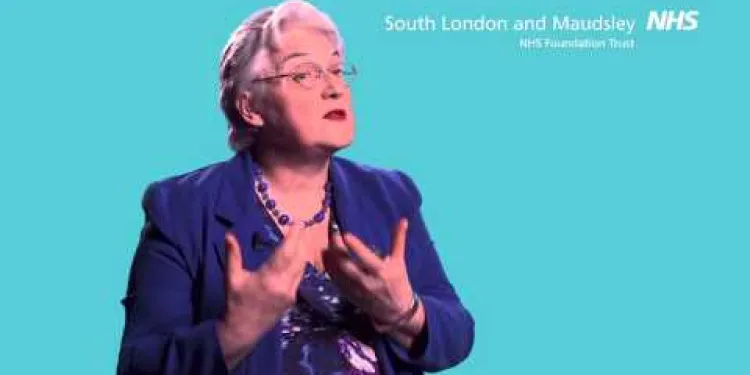
Eating disorders: treatment
Relevance: 41%
-
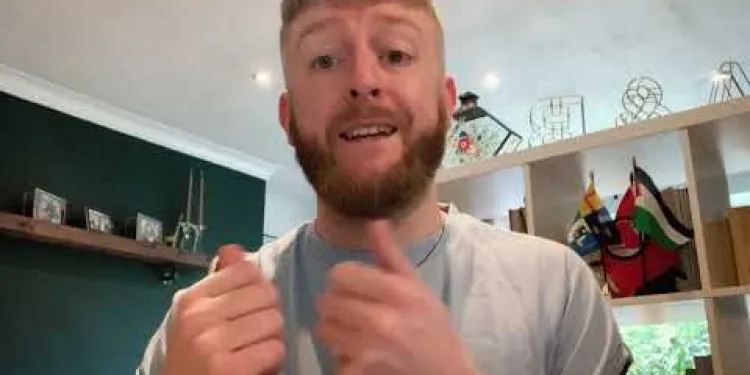
Living with Bipolar Disorder
Relevance: 40%
-
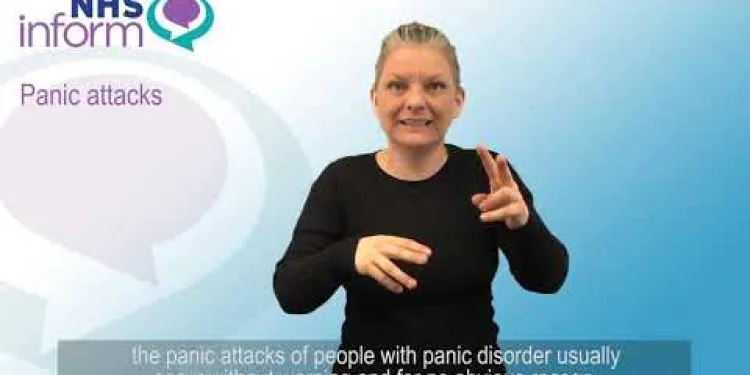
BSL - Diagnosis of panic disorder
Relevance: 39%
-

BSL - Causes of panic disorder
Relevance: 39%
-
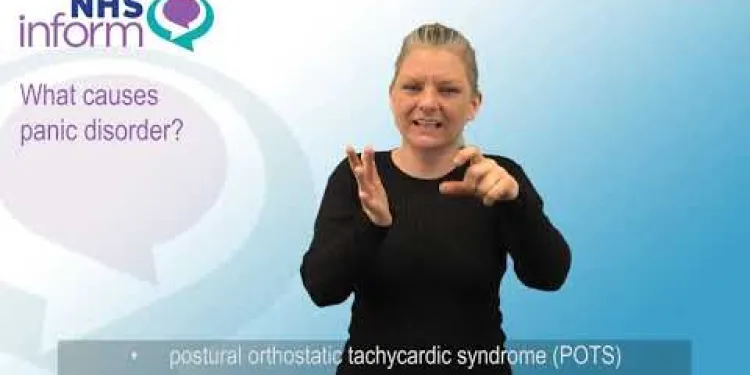
BSL - Introduction to panic disorder
Relevance: 39%
-
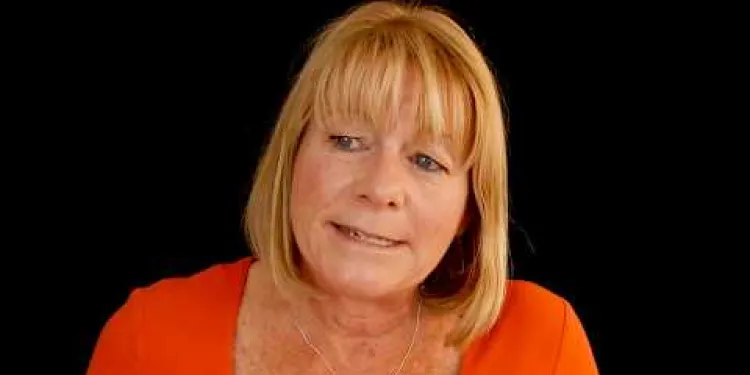
The treatment approach for an eating disorder
Relevance: 39%
-
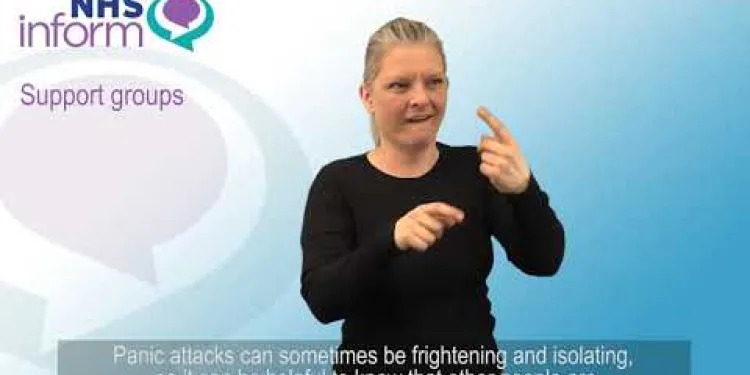
BSL - Treatment of panic disorder
Relevance: 38%
-
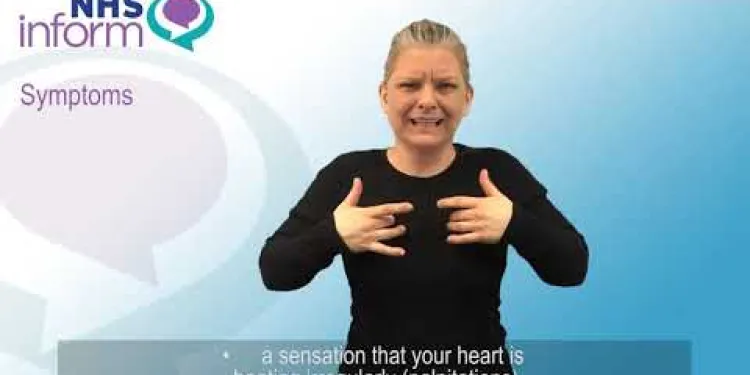
BSL - Symptoms of panic disorder
Relevance: 38%
-
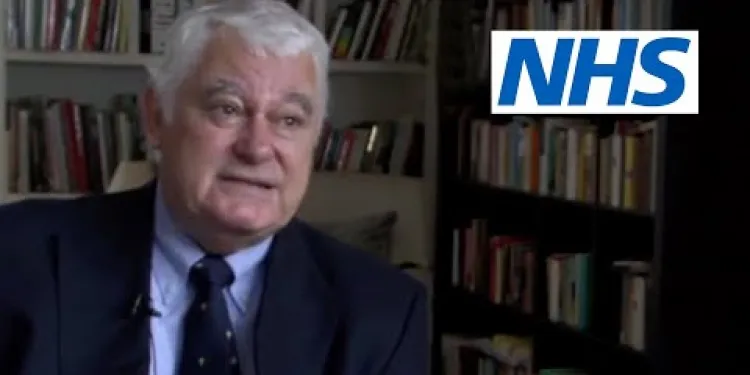
Bipolar disorder: Rod's story | NHS
Relevance: 37%
-
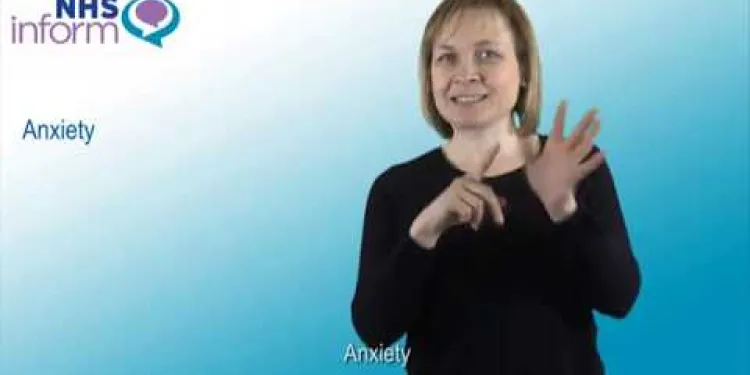
Generalised anxiety disorder (GAD)
Relevance: 35%
-
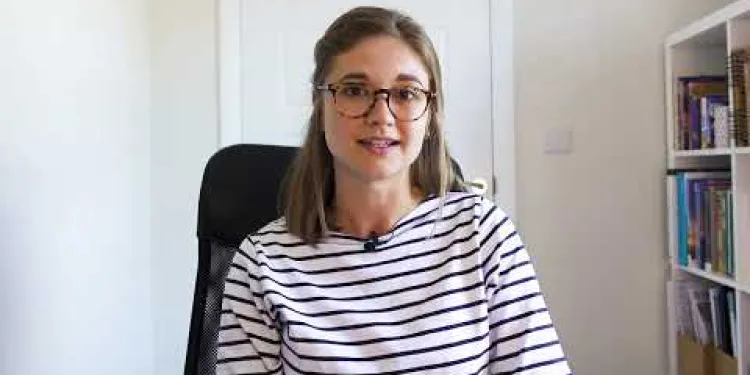
Jess Rann - Specialist Eating Disorders Dietitian
Relevance: 35%
-
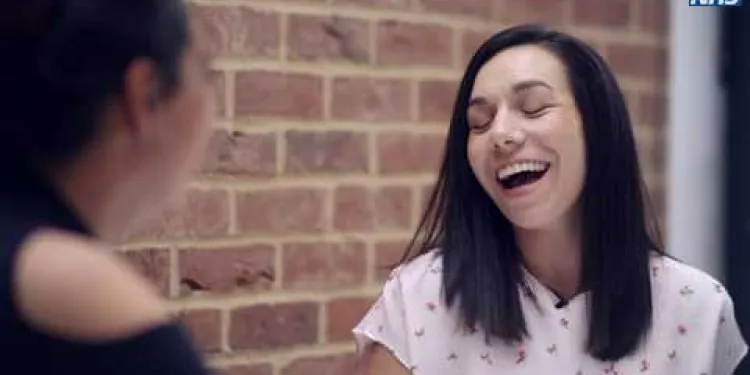
Short Films About Mental Health - Personality Disorders
Relevance: 34%
-
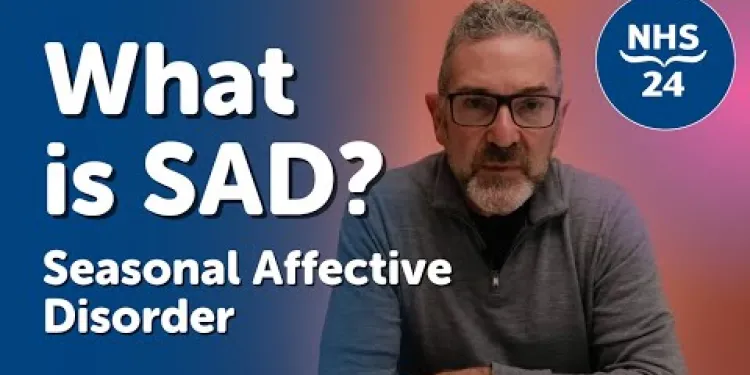
What is Seasonal Affective Disorder? (SAD)
Relevance: 32%
-
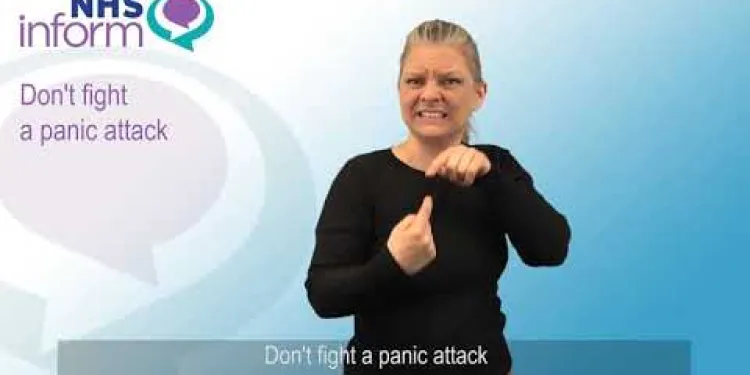
BSL - Panic disorder: things you can do to help yourself
Relevance: 32%
-
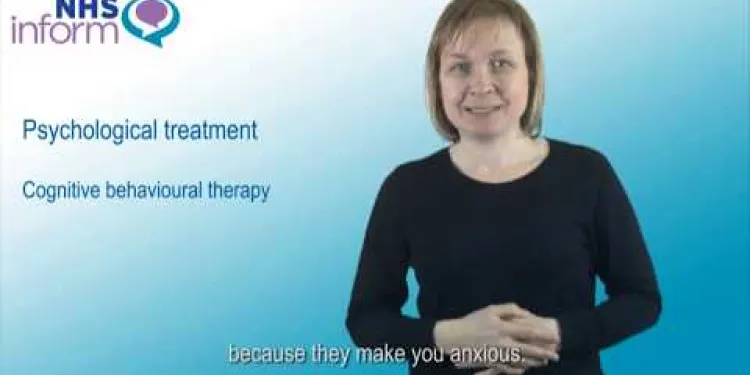
Treating generalised anxiety disorder (GAD)
Relevance: 32%
-
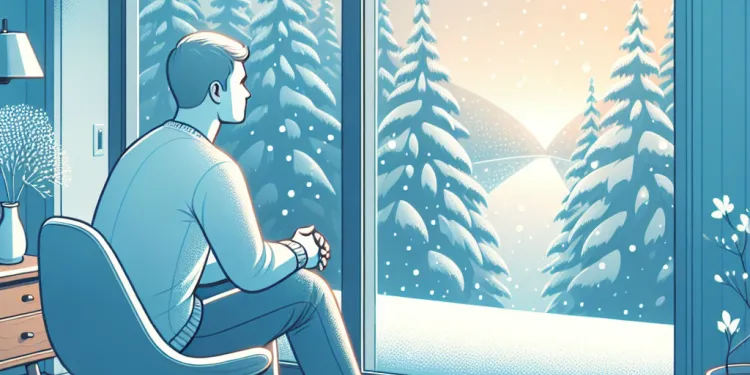
Strategies for Managing Seasonal Affective Disorder
Relevance: 31%
-

Post-traumatic stress disorder (PTSD) - Introduction
Relevance: 31%
-
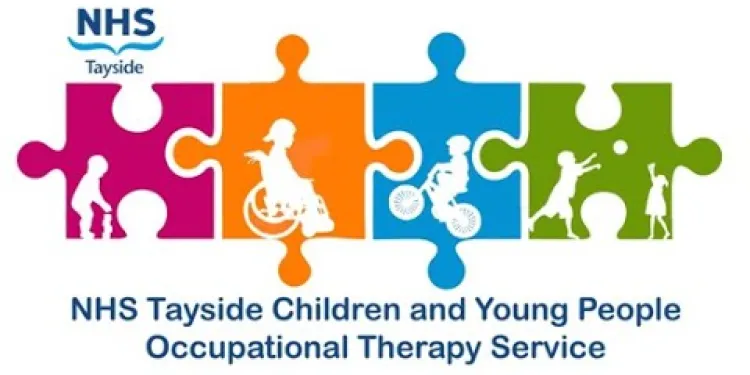
Developmental Coordination Disorder (DCD) for Children and Young People
Relevance: 31%
-

BSL - Diagnosis of obsessive compulsive disorder (OCD)
Relevance: 30%
-
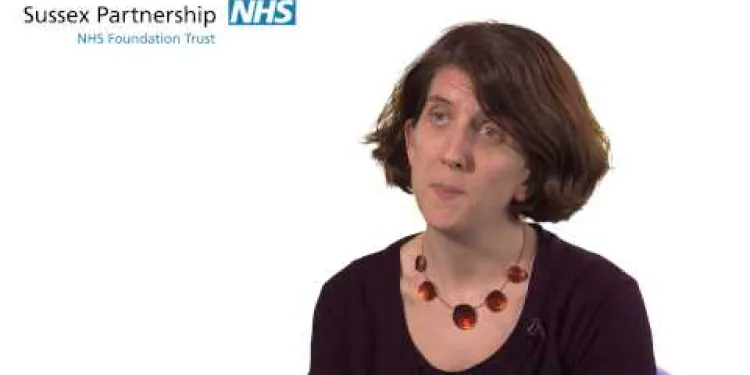
Clara Strauss: What is Obsessive Compulsive Disorder OCD
Relevance: 29%
-
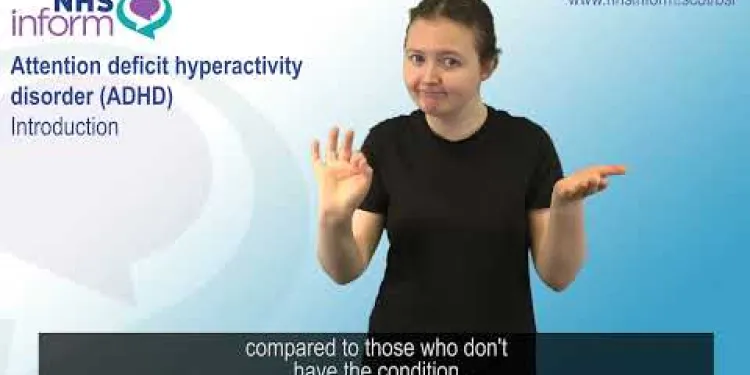
Attention deficit hyperactivity disorder (ADHD) - Introduction
Relevance: 28%
-
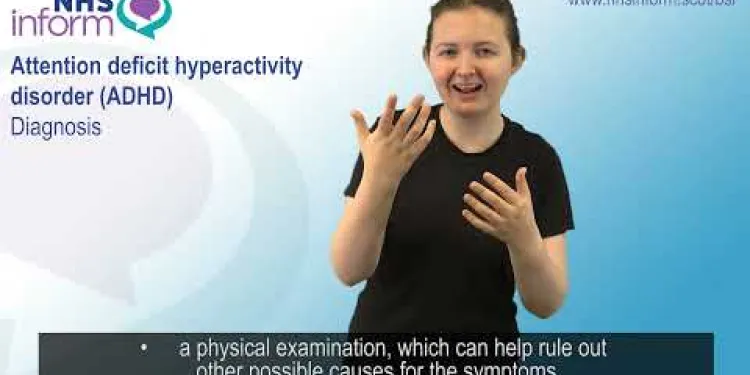
Attention deficit hyperactivity disorder (ADHD) - Diagnosis
Relevance: 27%
-

BSL - Introduction to obsessive compulsive disorder (OCD)
Relevance: 27%
-
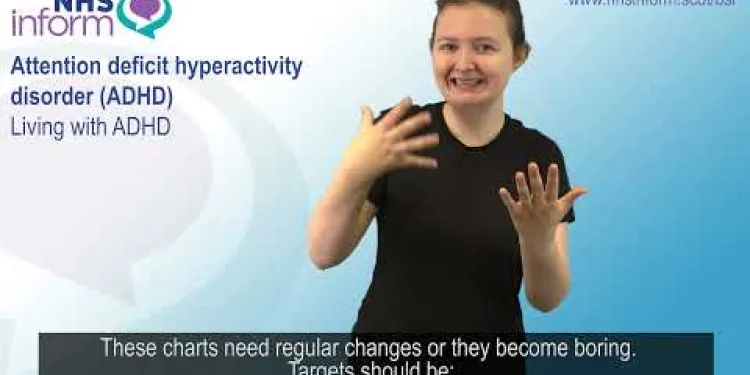
Attention deficit hyperactivity disorder (ADHD) - Living with ADHD
Relevance: 26%
-
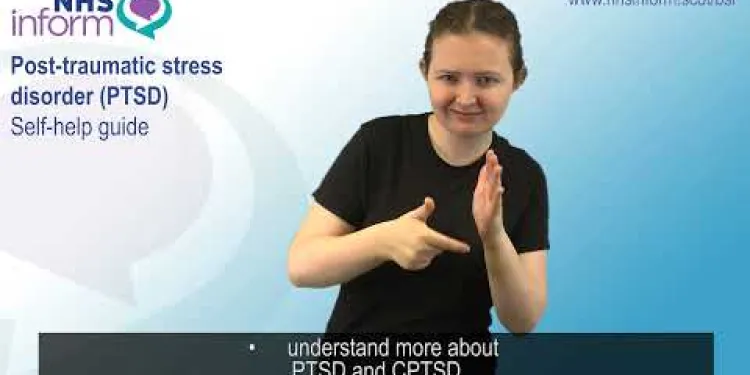
Post-traumatic stress disorder (PTSD) - Self-help guide
Relevance: 26%
-
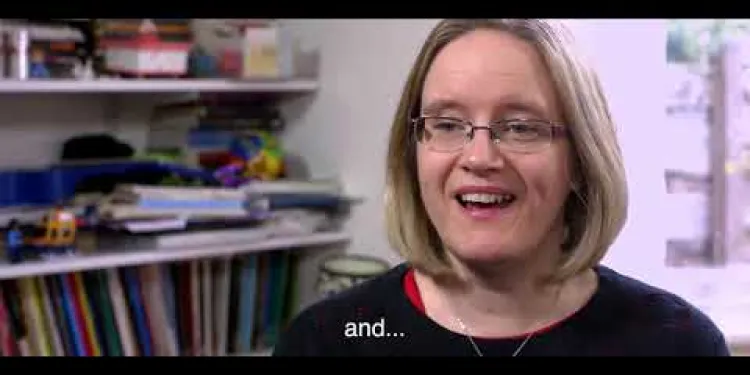
Living with Foetal Alcohol Spectrum Disorder (FASD), a mum’s journey (full version)
Relevance: 25%
-
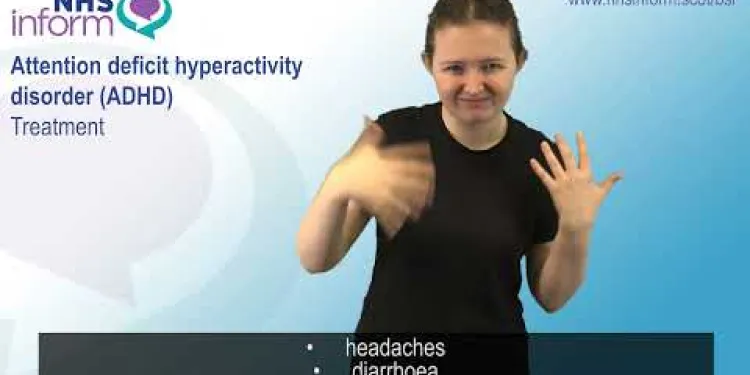
Attention deficit hyperactivity disorder (ADHD) - Treatment
Relevance: 25%
-

Can ketamine be used to treat major depressive disorder?
Relevance: 18%
-
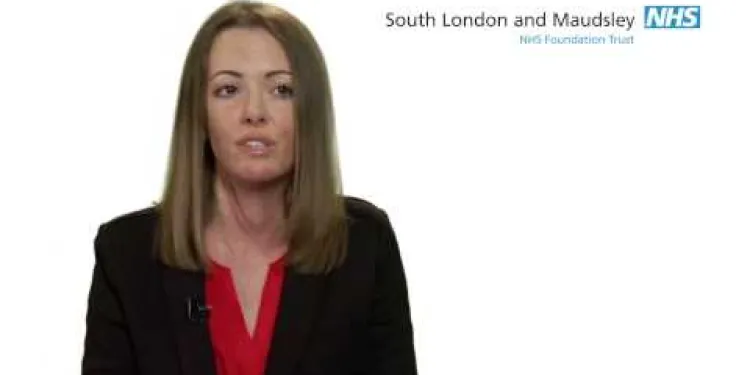
OCD
Relevance: 17%
-
How is mitochondrial disease different from other genetic disorders?
Relevance: 17%
-

What is a Wealth Tax?
Relevance: 16%
-

What type of anxiety do children and teenagers experience?
Relevance: 15%
-

What are some common types of SEND?
Relevance: 15%
-

Who should avoid using caffeine pouches?
Relevance: 13%
-
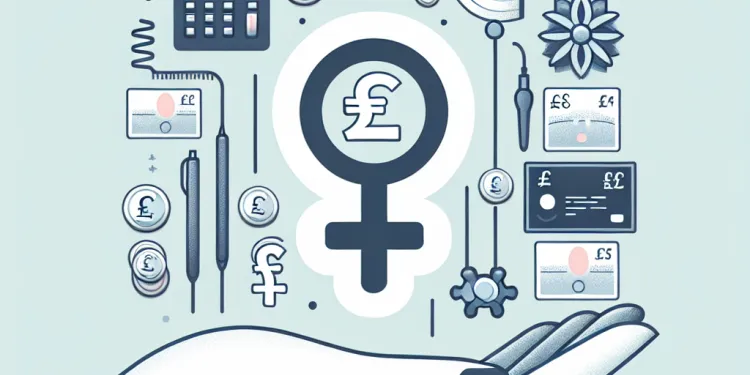
What are the reasons for female infertility?
Relevance: 13%
-

How is ADHD diagnosed?
Relevance: 13%
-

What causes ADHD?
Relevance: 13%
-

What conditions is ketamine used to treat?
Relevance: 12%
-
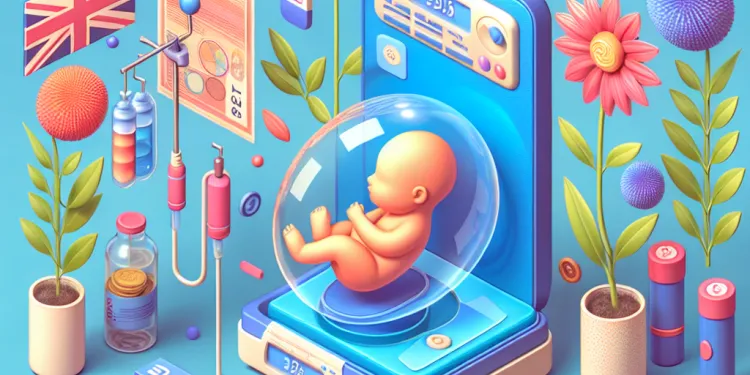
Who might need IVF?
Relevance: 12%
Living with a Hoarding Disorder: Steve Green's Story
Introduction
Steve Green, a resident of Manchester, has lived with a hoarding disorder for over two decades. He shares his journey of battling this challenging condition to offer hope and awareness to others in the United Kingdom who may be facing similar struggles.
The Onset of Hoarding
Steve recounts that his hoarding behaviour began in his mid-20s following a series of traumatic life events. Initially, he found comfort in accumulating items that reminded him of happier times. However, what started as a coping mechanism soon spiralled out of control, leading to a cluttered living environment.
The Daily Struggle
Living with a hoarding disorder significantly affected Steve's daily life. Simple tasks like cooking and cleaning became challenging as his home filled up with items he couldn't part with. This created a sense of isolation as he was too embarrassed to invite friends or family over, which further compounded his stress and anxiety.
Seeking Help
Realising the impact hoarding was having on his mental and physical well-being, Steve took the courageous step of seeking professional help. He attended therapy sessions which helped him understand the root causes of his disorder and began working with a support group. Cognitive-behavioural therapy (CBT) played a crucial role in his recovery process, offering him practical strategies to manage his hoarding tendencies.
A Message to Others
Steve now uses his experience to advocate for greater awareness and compassion for individuals suffering from hoarding disorder. He emphasises the importance of seeking help and encourages others in the UK to reach out to community resources and mental health professionals. Steve's story is a testament to the power of support and the possibility of leading a fulfilling life despite the challenges posed by hoarding disorder.
Conclusion
Steve Green’s journey with hoarding disorder sheds light on a condition often misunderstood and stigmatised. His tale is not just one of struggle, but of resilience and hope—a reminder that help is available and recovery is possible.
Living with a Hoarding Disorder: Steve Green's Story
Introduction
Steve Green lives in Manchester. He has had a hoarding disorder for over 20 years. Steve wants to share his story. He hopes it will help other people in the UK who have the same problem.
The Start of Hoarding
Steve says his hoarding began in his twenties. It started after some sad times in his life. At first, collecting things made him feel better. But soon, he had too many things in his house, and this became a big problem.
Daily Problems
Hoarding made Steve's daily life hard. Doing things like cooking and cleaning was difficult because his home was full of stuff. Steve felt alone because he was ashamed to have friends or family visit. This made him feel more stressed and worried.
Getting Help
Steve knew hoarding was affecting his health. He bravely decided to get help. Steve went to therapy and worked with a support group. He learned why he was hoarding and got tips to control it. Therapy, like CBT, taught him how to manage better.
A Message to Others
Now, Steve talks to people about hoarding disorder. He wants more people to understand it. Steve thinks getting help is important and says people in the UK should talk to mental health professionals. His story shows that with support, people can get better and have a happy life.
Conclusion
Steve Green’s story shows that hoarding disorder is a real problem. But his story is also about hope. It reminds us that with help, people can overcome challenges and feel better again.
Frequently Asked Questions
What is hoarding disorder?
Hoarding disorder is a mental health condition characterized by persistent difficulty discarding or parting with possessions, regardless of their actual value, leading to clutter that disrupts living spaces and everyday life.
How did Steve Green realize he had a hoarding disorder?
Steve Green recognized he had a hoarding disorder when the clutter in his home started interfering with his daily activities and relationships, and he felt overwhelmed by the amount of items in his possession.
What are the common symptoms of hoarding disorder?
Common symptoms include excessive acquisition of items, difficulty discarding possessions, cluttered living spaces, and significant distress or impairment in social, occupational, or other important areas of functioning.
What factors contributed to Steve’s hoarding behavior?
Steve's hoarding behavior was influenced by a combination of factors including past trauma, emotional attachment to possessions, and a tendency to procrastinate and avoid decision-making.
How did Steve Green seek help for his disorder?
Steve sought help by consulting mental health professionals, including therapists who specialize in cognitive-behavioral therapy (CBT) tailored for hoarding disorder. He also joined support groups for individuals with similar experiences.
Is there a cure for hoarding disorder?
While there is no definitive cure for hoarding disorder, it can be effectively managed with therapy, medication, and support. Cognitive-behavioral therapy (CBT) has been particularly effective in helping individuals reduce hoarding behaviors.
What role did therapy play in Steve’s recovery?
Therapy played a crucial role in Steve’s recovery by helping him understand the underlying causes of his hoarding behavior, develop strategies to manage it, and gradually declutter his home in a sustainable way.
What advice does Steve give to others struggling with hoarding disorder?
Steve advises others to seek professional help, be patient with themselves, take small steps towards decluttering, and not be afraid to reach out to friends and family for support.
How can friends and family support someone with hoarding disorder?
Friends and family can support someone with hoarding disorder by offering non-judgmental support, helping them seek professional help, and assisting with decluttering efforts in a respectful and understanding manner.
What challenges did Steve face when beginning to declutter?
Steve faced emotional distress, overwhelming feelings, and difficulty in deciding what to discard. The sentimental value attached to many items also made the process challenging.
Can children be affected by hoarding disorder?
Yes, children can be affected by hoarding disorder, especially if they are living in a household where a parent or primary caregiver has the condition. Early intervention and support can help.
Are there specific therapies recommended for hoarding disorder?
Cognitive-behavioral therapy (CBT) is commonly recommended for hoarding disorder. This type of therapy focuses on changing the thought patterns and behaviors that contribute to hoarding.
What are some signs that someone might have a hoarding disorder?
Signs include an inability to discard items, severe anxiety over discarding possessions, large amounts of clutter that make living spaces unusable, and significant distress or impairment in daily functioning.
What resources are available in the UK for individuals with hoarding disorder?
In the UK, resources for individuals with hoarding disorder include the NHS, charities like HoardingUK, support groups, and private therapists specializing in hoarding disorder. Local councils also offer support services.
How has Steve Green’s life changed after managing his hoarding disorder?
Steve Green’s life has improved significantly after managing his hoarding disorder. He experiences less stress and anxiety, enjoys more organized living spaces, and has better relationships with friends and family.
What is hoarding disorder?
Hoarding disorder is when people find it hard to get rid of things. They collect a lot of stuff, even if they do not need it. This can make their home very messy and hard to live in.
If you or someone you know struggles with hoarding, talking to a doctor or therapist can help. They can give support and advice.
Using tools like checklists can help in organizing things. Try cleaning one small area at a time. Ask a friend or family member to help you.
Hoarding disorder is when someone has a hard time throwing things away. It doesn't matter if the things are worth money or not. This can make a big mess in their home and make it hard to live a normal life.
If you or someone you know has this problem, it can help to talk to a doctor. They can offer good advice and treatments. Using tools like reminder lists and calendars can help keep track of things. Asking friends or family to help clean up can also make things better.
How did Steve Green find out he had a hoarding problem?
Steve Green learned he had a hoarding problem when he noticed his house was too full of stuff. He found it hard to throw things away, and things piled up everywhere.
If you think you might hoard things too, try these tips:
- Ask a friend or family member to help you look at your things.
- Sort items into keep, throw away, and donate piles.
- Set small goals, like cleaning one room at a time.
- Think about talking to someone who helps people with hoarding problems.
Steve Green knew he had a hoarding problem when the mess in his house started making his life hard. He couldn't do things he needed to do, and it was hurting his friendships. He felt like he had too much stuff and got stressed about it.
If you feel like this, you can try:
- Talking to a friend or family member about how you feel.
- Writing a list of things you really need and things you don't.
- Cleaning up one small area at a time.
- Using a picture chart to plan your cleaning.
What are the signs of hoarding disorder?
Hoarding disorder means keeping too many things.
Signs include:
- Not wanting to throw things away.
- Feeling stressed if you have to get rid of things.
- Messy rooms with too much stuff.
- Hard to find or use parts of your home.
- Getting upset when other people try to clean up.
Here are some tips that might help:
- Ask a friend or family member to help clean up.
- Set small goals, like cleaning one corner of a room.
- Use pictures to organize what to keep and what to give away.
- Talk to someone who can help, like a professional therapist.
Some common signs of hoarding are:
- Getting too many things.
- Finding it hard to throw things away.
- Having messy and crowded rooms.
- Feeling upset and having problems at home, work, or with friends.
Here are some things that can help:
- Ask a friend or family member to help sort and tidy.
- Make a plan to throw away a few things every day.
- Talk to a doctor or counselor if you feel very upset.
Why does Steve keep too many things?
Steve keeps a lot of things. Here are some reasons why he might do this:
- He might feel safer with his things around him.
- He could have strong memories tied to his things.
- Sometimes, he might not know how to organize his things.
- He might worry about running out of stuff he needs.
- He could find it hard to decide what to keep or throw away.
Steve can try a few things to help him manage:
- He can ask a friend or family member to help him sort his things.
- He can use boxes or shelves to keep his things tidy.
- He can set small goals, like cleaning one room at a time.
- He can talk to someone who understands these feelings.
Steve keeps too many things because of different reasons. These reasons are things like bad experiences from the past, loving his things too much, and putting off making decisions. Steve finds it hard to throw things away.
How did Steve Green get help for his problem?
Steve Green had a problem. He wanted help. Here are some easy ways he could get help:
- Talk to a Doctor: Steve can visit a doctor. Doctors know a lot and can help.
- Speak to Family and Friends: Steve can talk to people he trusts. They can listen and support him.
- Find Groups: Steve can join groups where people talk about their problems. Hearing others' stories can help.
- Use Apps or Websites: There are apps and websites with information to help with problems.
Steve can choose any of these ways to get help.
Steve got help from people who know about mental health. He talked to therapists who use a method called CBT, which is a special way to help people who have problems with keeping too many things. He also went to groups where people with the same problem could talk and help each other.
Can hoarding disorder be fixed?
Hoarding disorder means it's hard for a person to throw things away. They keep lots of stuff, even things they don’t need.
There is no quick fix, but there are ways to help:
- Talk to a doctor or therapist: They can help understand why a person keeps things.
- Therapy: Working with a therapist can teach new ways to think and act.
- Family and friends: Having support from loved ones is important.
These steps can make life better, but it might take time. Be patient and kind to yourself or others who have hoarding disorder.
There is no sure way to make hoarding disorder go away completely, but it can get better with help. Talking to a therapist, taking medicine, and having support can really help. A special kind of talking therapy called Cognitive-behavioral therapy (CBT) is very good at helping people who hoard too much stuff.
How did talking to a helper make Steve feel better?
Therapy was very important for Steve. It helped him get better by showing him why he was keeping too many things. Therapy taught Steve new ways to handle his problem and helped him tidy up his home step by step so it stayed clean and neat.
What tips does Steve have for people with hoarding problems?
Steve shares some simple tips to help.
- Ask for help from friends or family.
- Try cleaning up a little bit every day.
- Talk to a doctor or a counselor. They can help you feel better.
- Use pictures to see what a clean room looks like.
- Celebrate when you make progress, like getting rid of a few things.
Even if it feels hard, remember you can get better with small steps.
Steve gives some tips. He says to ask a professional for help. Be kind and patient with yourself. Take little steps to clean up. Do not worry about asking friends and family for help.
How can friends and family help someone who collects too many things?
Friends and family can help someone who keeps too many things. They can do this by being kind and not judging. They can help the person find a doctor or therapist to talk to. They can also help clean up the things in a nice way.
What problems did Steve have when he started to clean up?
Steve felt very upset and had strong feelings. He found it hard to choose what things to throw away. Many things were special to him, which made it even harder.
Can hoarding disorder affect children?
Hoarding disorder means keeping too many things and not being able to get rid of them. This can make a home messy and hard to live in.
Yes, children can be affected by hoarding disorder. They might feel sad, stressed, or embarrassed about the mess. It can be hard to invite friends over to play.
If you know a child who is affected, there are things you can do to help:
- Talk to them and listen to their feelings.
- Encourage them to ask for help from a trusted adult, like a parent or teacher.
- Use pictures or simple checklists to make cleaning up easier.
- Spend time organizing and tidying together.
Helping a child feel safe and supported is important.
Yes, children can feel the effects of hoarding. This happens if they live with someone, like a parent, who hoards. Getting help early can make things better.
What treatments can help with hoarding?
Some people have a hard time getting rid of things. This is called hoarding. There are ways to help!
Here are some ideas:
- Talk to a therapist. They can help understand why it's hard to let go of stuff.
- Join a support group. It feels better to talk with others who understand.
- Try little steps. Start with one room or even just one box.
- Use a checklist. Write down what you want to sort through.
- Ask friends or family for help. They can be supportive.
Therapists, checklists, and support groups are good tools to make it easier.
There is a type of talking therapy called CBT. It can help people who hoard too many things. CBT helps change the way people think and act about keeping things.
What are signs that someone might collect too many things?
Here are things that might show someone has a hard time getting rid of stuff:
- They keep a lot of things, even if they don't use them.
- Their home is very messy and full of things.
- They feel upset or worried about throwing things away.
- They have a hard time organizing their things.
Tools that might help:
- Make a list of things you really need.
- Ask a friend or family member for help with sorting things.
- Use boxes to keep things neat and tidy.
Signs that someone might have a problem are:
- They can't throw things away.
- They get very upset about getting rid of stuff.
- They have so much stuff that they can't use their rooms properly.
- They find it hard to do everyday things because of all the clutter.
If you or someone you know is having trouble, try talking to someone you trust. You can also use tools like making a list of things you really need or asking a friend to help you tidy up.
What help is there in the UK for people who have hoarding disorder?
If you or someone you know has hoarding disorder, there is help in the UK. Here are some ways to get support:
- Talk to a doctor: They can help find the right support and treatment.
- Counselling: Talking to a therapist or counselor can help manage hoarding behaviors.
- Support groups: Joining a group can allow you to share experiences and tips with others. Search online for groups in your area.
- Charities and organizations: Some charities focus on helping people with hoarding disorder. They can offer advice and support.
- Books and websites: Reading books or visiting websites about hoarding can give more information and tips.
Remember, asking for help is a big and brave step. You are not alone, and there are people who can help you.
In the UK, there are places that can help people who collect too many things. You can get help from the NHS or charities like HoardingUK. There are also groups where people can talk and get support. Some private therapists know how to help with this problem. Local councils have services that can help too.
What is different in Steve Green’s life now that he has learned to manage his problem with keeping too many things?
Steve Green's life is much better now. He used to keep too many things, but now he doesn't. He feels less worried and is not as stressed. His home is tidy and organized. He also gets along better with his friends and family.
Useful Links
- Ergsy carfully checks the information in the videos we provide here.
- Videos shown by Youtube after a video has completed, have NOT been reviewed by ERGSY.
- To view, click the arrow in centre of video.
- Most of the videos you find here will have subtitles and/or closed captions available.
- You may need to turn these on, and choose your preferred language.
- Go to the video you'd like to watch.
- If closed captions (CC) are available, settings will be visible on the bottom right of the video player.
- To turn on Captions, click settings .
- To turn off Captions, click settings again.
More Items From Ergsy search
-

Steve Green tells his story on living with a hoarding disorder
Relevance: 100%
-

Eating disorders: treatment
Relevance: 41%
-

Living with Bipolar Disorder
Relevance: 40%
-

BSL - Diagnosis of panic disorder
Relevance: 39%
-

BSL - Causes of panic disorder
Relevance: 39%
-

BSL - Introduction to panic disorder
Relevance: 39%
-

The treatment approach for an eating disorder
Relevance: 39%
-

BSL - Treatment of panic disorder
Relevance: 38%
-

BSL - Symptoms of panic disorder
Relevance: 38%
-

Bipolar disorder: Rod's story | NHS
Relevance: 37%
-

Generalised anxiety disorder (GAD)
Relevance: 35%
-

Jess Rann - Specialist Eating Disorders Dietitian
Relevance: 35%
-

Short Films About Mental Health - Personality Disorders
Relevance: 34%
-

What is Seasonal Affective Disorder? (SAD)
Relevance: 32%
-

BSL - Panic disorder: things you can do to help yourself
Relevance: 32%
-

Treating generalised anxiety disorder (GAD)
Relevance: 32%
-

Strategies for Managing Seasonal Affective Disorder
Relevance: 31%
-

Post-traumatic stress disorder (PTSD) - Introduction
Relevance: 31%
-

Developmental Coordination Disorder (DCD) for Children and Young People
Relevance: 31%
-

BSL - Diagnosis of obsessive compulsive disorder (OCD)
Relevance: 30%
-

Clara Strauss: What is Obsessive Compulsive Disorder OCD
Relevance: 29%
-

Attention deficit hyperactivity disorder (ADHD) - Introduction
Relevance: 28%
-

Attention deficit hyperactivity disorder (ADHD) - Diagnosis
Relevance: 27%
-

BSL - Introduction to obsessive compulsive disorder (OCD)
Relevance: 27%
-

Attention deficit hyperactivity disorder (ADHD) - Living with ADHD
Relevance: 26%
-

Post-traumatic stress disorder (PTSD) - Self-help guide
Relevance: 26%
-

Living with Foetal Alcohol Spectrum Disorder (FASD), a mum’s journey (full version)
Relevance: 25%
-

Attention deficit hyperactivity disorder (ADHD) - Treatment
Relevance: 25%
-

Can ketamine be used to treat major depressive disorder?
Relevance: 18%
-

OCD
Relevance: 17%
-
How is mitochondrial disease different from other genetic disorders?
Relevance: 17%
-

What is a Wealth Tax?
Relevance: 16%
-

What type of anxiety do children and teenagers experience?
Relevance: 15%
-

What are some common types of SEND?
Relevance: 15%
-

Who should avoid using caffeine pouches?
Relevance: 13%
-

What are the reasons for female infertility?
Relevance: 13%
-

How is ADHD diagnosed?
Relevance: 13%
-

What causes ADHD?
Relevance: 13%
-

What conditions is ketamine used to treat?
Relevance: 12%
-

Who might need IVF?
Relevance: 12%


